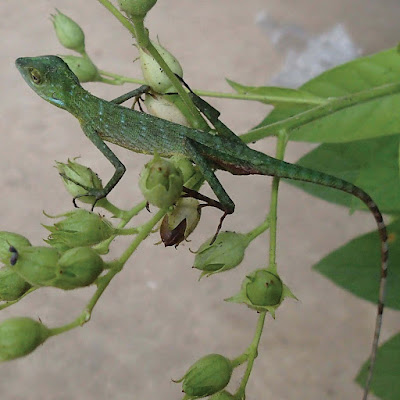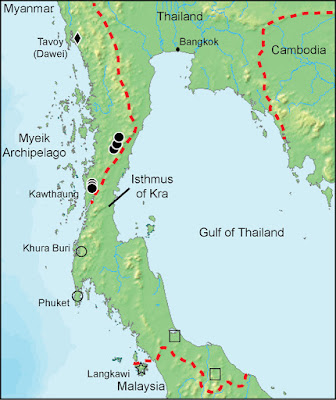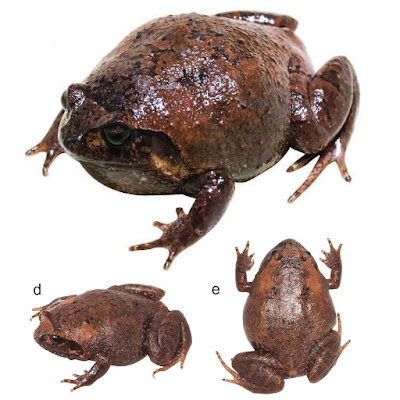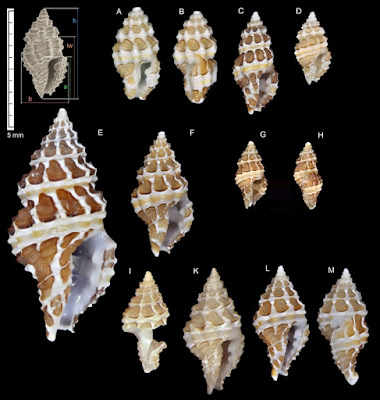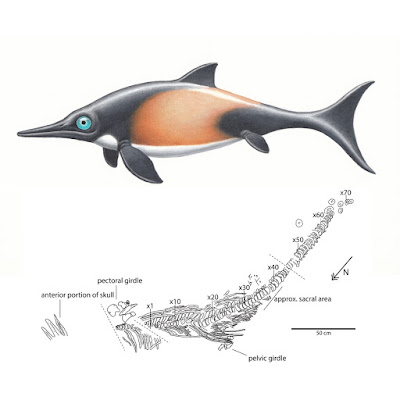[Most Recent Entries] [Calendar View]
Tuesday, February 28th, 2017
| Time | Event | ||||
| 4:00a | [Herpetology • 2017] Resurrection of Bronchocela burmana Blanford, 1878 for the Green Crested Lizard (Squamata, Agamidae) of southern Myanmar
Abstract Recent fieldwork in southern Tanintharyi revealed the presence of a small Green Crested Lizard in the wet evergreen forest. We generated mtDNA sequence data (ND2) that demonstrates that this population’s nearest relative is Bronchocela rayaensis Grismer et al., 2015 of Pulau Langkawi, northwestern Peninsular Malaysia and Phuket Island. Morphologically the Burmese Bronchocela shares many features with B. rayaensis, which potentially would make this recently described Thai-Malay species a synonym of Bronchocela burmana Blanford, 1878; however, we interpret the genetic and morphological differences to reflect evolutionary divergence and recommend the recognition of both species. Keywords: Reptilia, Southeast Asia, Tanintharyi Division, Thailand, Peninsular Malaysia, morphology, molecular phylogeny, synonymy, nomenclature
Bronchocela burmana Blanford, 1878 Burmese Green Crested Lizard Bronchocela burmana Blanford, 1878, Proceedings of the Asiatic Society of Bengal 1878(6): 141. Definition A Bronchocela lizard with a short nuchal crest of six to nine erect triangular crest scales; no middorsal crest of raised scales on trunk. Snout-vent length of adults range from 80 to 94 mm with tail length 240 to 360% of snout-vent length; limbs slender, forelimbs 42–52% of SVL, hindlimbs 86–97% of SVL; digits long and slender with third finger slightly longer than fourth finger, fourth toe distinctly longer that third toe; head medium sized (25–27% of SVL); head with distinct canthal ridge, narrow triangular shaped from dorsal view, length > width ≈ height and approximately 26 % of SVL; moderately large eye (OrbD/HeadL ~26–28%) and about twice diameter of tympanum (continuous with temporal surface). General description Detailed metric and scalation features are presented above in the Results section, also Table 2. Bronchocela burmana is a slender green lizard with long tail, usually 2.5–3.5X snout-vent length. In spite of its 80 to 94 mm body length, its slenderness and thin legs give it a delicate appearance and make it immediately recognizable among the other lizards of southern Tanintharyi. In life, Bronchocela burmana appears uniformly green (Fig. 2). Preservation changed the overall coloration to light olive but highlights a light rufous vertical bar in the temporal area. George R. Zug, Daniel G. Mulcahy and Jens V. Vindum. 2017. Resurrection of Bronchocela burmana Blanford, 1878 for the Green Crested Lizard (Squamata, Agamidae) of southern Myanmar. ZooKeys. 657: 141-156. DOI: 10.3897/zookeys.657.11600 Grismer, L. L., JR. P. L. Wood, Cheol H. Lee, Evan S. H. Quah, Shahrul Anuar, Ehwan Ngadi & Jack W. Sites, Jr. 2015. An Integrative Taxonomic Review of the Agamid Genus Bronchocela (Kuhl, 1820) from Peninsular Malaysia with Descriptions of New Montane and Insular Endemics. Zootaxa. 3948(1): 1–23. DOI: 10.11646/zootaxa.3948.1.1 | ||||
| 4:19a | [Herpetology • 2017] Rhombophryne nilevina • Diamond in the Rough: A New Species of Fossorial Diamond Frog (Rhombophryne) from Ranomafana National Park, southeastern Madagascar
Abstract We describe a new species from the cophyline microhylid genus Rhombophryne, a group of fossorial and terrestrial frogs endemic to Madagascar. Found during herpetofaunal surveys of moist montane forest in the remote north of Ranomafana National Park, Rhombophryne nilevina sp. n. exemplifies two difficulties that hinder taxonomic progress in Malagasy cophyline frogs: micro-endemicity and highly secretive habits. Known from only two adult male specimens, this new species is nonetheless easily distinguishable from all other known Rhombophryne using morphological data, and osteological data collected here via X-ray Micro-Computed Tomography, or " micro-CT ". This species is now the largest known Rhombophryne, and the only one known from Ranomafana National Park, which will make it the southern-most member of the genus pending a forthcoming taxonomic revision involving Plethodontohyla and Rhombophryne. Pairwise distances of the mitochondrial 16s rRNA marker show a minimum genetic distance of 4.9% from other nominal Rhombophryne. We also describe recordings of an advertisement call, emitted from a burrow by the holotype. Rhombophryne nilevina sp. n. is not known to be found syntopically with other Rhombophryne, nor to be present elsewhere in Ranomafana National Park, but it probably does co-occur with a few ecologically similar Plethodontohyla species. Although the type locality is within a protected area, we suggest an IUCN listing of Data Deficient for R. nilevina sp. n., as its area of occupancy is largely undetermined within the park. Key Words: Amphibia, Anura, Microhylidae, Rhombophryne nilevina, taxonomy, osteology, micro-CT, endemicity, herpetology Rhombophryne nilevina sp. n. Suggested common English name: Buried Diamond Frog Suggested common Malagasy name: Sahona diamondra nilevina Suggested common French name: La grenouille de diamant enterré Diagnosis: A frog assigned to the cophyline genus Rhombophryne on the basis of its divided vomer, the possession of clavicles and knob-shaped terminal phalanges (see Scherz et al. 2016a). This species is characterized by the following suite of characters: large size (SVL at least up to 57.2 mm), wide, short head (HW 180.7% of HL), tympanum 58.6% of eye, forelimb 51.1% of SVL, tibia 42.2% of SVL, hindlimb 152.5% of SVL, large inner metacarpal and metatarsal tubercles, supratympanic fold distinct and raised, running from the posterior corner of the eye straight over the tympanum, then sharply down behind it, extending to join the front of the arm, distinct vomerine teeth forming curved rows posteromedial to the oblong choanae, separated medially by a small cleft, second finger shorter than fourth finger, fifth toe distinctly shorter than third, without finger or toe reduction, finger and toe tips not enlarged. Additionally, R. nilevina is separated from all nominal species of Rhombophryne by an uncorrected pairwise distance of at least 4.9% in the fragment of the 16S rRNA gene, and by at least 3.8% from all known candidate species in this genus. ...... Etymology: The specific epithet “nilevina” is a Malagasy word meaning “buried.” This name was chosen to recognize the fossorial habits of this species. It is to be treated as an invariable noun in apposition. Natural history. Both known specimens of R. nilevina were obtained from a relatively flat, poorly drained section of moist montane forest adjacent to a stream, with the holotype found along the bank of this stream. Nearby habitats include a swamp with many large Pandanus and steep forested slopes with relatively smaller trees. However, the calls of R. nilevina seemed to emanate mostly from the flatter, forested area. Males were heard calling during the day, particularly during overcast conditions and after rainfall. Advertisement calls were not heard at night, however, the night-time chorus of other frogs, including Boophis, Spinomantis, Gephyromantis, and Anodonthyla, may have interfered with detection. When heard from a distance, the call is reminiscent of that of an owl. When heard from close proximity, the call sounds like a groan, and is far less melodic. Both specimens were both located by auditory tracking, and found calling from underground: one from a cavity under the roots of a large tree, and the other from a burrow in soft, moist soil alongside the stream. In order to collect the holotype from its burrow, excavation was required. Based on these observations and suggestive morphology, we presume that R. nilevina spend much of their lives underground, possibly coming to the surface for short periods during rainfall, similar to other fossorial Rhombophryne species (Glaw and Vences 2007, D’Cruze et al. 2010). We also note that R. nilevina was discovered in the middle of the wet season, and after a week-long period of particularly heavy, sustained rain. Distribution: Rhombophryne nilevina has thus far been detected at a single site, near the former village of Andemaka, in the north-west of Ranomafana National Park (Fig. 2). This locality is relatively high-elevation for Ranomafana National Park (ca. 1240 m). To our knowledge, R. nilevina has not been detected by any previous survey, including several conducted by CRH and SML at similarly high-elevation sites in the northern (Miaranony), central (Vohiparara), and southern (Maharira) regions of Ranomafana. Nevertheless, we do not rule out here the possibility that R. nilevina occurs elsewhere in the park. This is in large part due to the secretive habits and potentially ephemeral activity periods of this species (see Natural history). In addition, much of the high-elevation forest of Ranomafana is difficult to access and thus remains sparsely or completely unsurveyed for herpetofauna. Although it is possible that R. nilevina has been overlooked in other eastern rainforest patches, current information suggests that this species is endemic to Ranomafana National Park, and potentially to a much smaller area within the park. Shea M Lambert, Carl R. Hutter and Mark David Scherz. 2017. Diamond in the Rough: A New Species of Fossorial Diamond Frog (Rhombophryne) from Ranomafana National Park, southeastern Madagascar. Zoosystematics and Evolution. 93(1); 143–155. DOI: 10.3897/zse.93.10188 Diamond in the rough: meet Madagascar's fat new frog http://www.markscherz.com/archives/3147 via @MarkScherz | ||||
| 9:15a | [Mammalogy • 2017] Sciurus meridionalis • New Endemic Mammal Species (Rodentia, Sciuridae) for Europe
Abstract Combining genetic, morphological and geographical data, we re-evaluate Sciurus meridionalis, Lucifero 1907 as a tree squirrel species. The species, previously considered a subspecies of the Eurasian red squirrel, Sciurus vulgaris, is endemic to South Italy with a disjunct distribution with respect to S. vulgaris. The new species has a typical, monomorphic coat colour characterized by a white ventral fur and a very dark-brown to blackish fur on the back, sides and tail. Specimens of S. meridionalis have a larger hind foot length and weigh about 35% more than live-caught S. vulgaris from northern Italy. S. meridionalis is larger than S. vulgaris specimens from three other regions in Italy for mandible length, skull width and skull (condylobasal) length, and principal component scores indicate significant shape differences of specimens from the Calabria population (S. meridionalis) compared to all other specimens (S. vulgaris). These morphological differences are further supported by genetic evidence at three mitochondrial markers (D-loop, cytochrome b and the DNA barcoding region COI) using the widest molecular dataset ever assembled for Sciurus vulgaris and S. meridionalis. All the investigated markers revealed exclusive haplotypes for S. meridionalis well separated from those of S. vulgaris and previously published results based on nuclear markers further support our taxonomic hypothesis. We suggest Calabrian black squirrel as common name for this new taxon. Keywords: Sciuridae; Sciurus meridionalis; taxonomy; new species; Italy
Family Sciuridae Fischer von Waldheim, 1817 Genus Sciurus Linnaeus, 1758 Sciurus meridionalis, Lucifero 1907 Geographical distribution: The range of Sciurus meridionalis Lucifero, 1907 includes the three main mountain blocks of Calabria: the whole Pollino massif (including Lucanian side) at the border between Calabria and Lucania, the Sila massif and the Aspromonte massif, with three once disjunct populations.Only recently the Pollino and Sila populations have become connec-ted by colonization of the Catena Costiera, which was made possible by replanting of conifers (Rima et al., 2009). The species has not been reported from the Serre Massif (Fig. 3). Lucas A. Wauters, Giovanni Amori, Gaetano Aloise, Spartaco Gippoliti, Paolo Agnelli, Andrea Galimberti, Maurizio Casiraghi, Damiano Preatoni and Adriano Martinoli. 2017. New Endemic Mammal Species for Europe: Sciurus meridionalis (Rodentia, Sciuridae). Hystrix [the Italian Journal of Mammalogy]. DOI: 10.4404/hystrix-28.1-12015 | ||||
| 9:20a | [Mollusca • 2017] Not All Spotted Cats are Leopards: Evidence for A Hemilienardia ocellata species complex (Gastropoda: Conoidea: Raphitomidae) Abstract The small conoidean Hemilienardia ocellata is one of the easily recognizable Indo-Pacific “turrids”, primarily because of its remarkable eyespot colour pattern. Morphological and molecular phylogenetic analyses revealed four species that share this “characteristic” colour pattern but demonstrate consistent differences in size and shell proportions. Three new species – Hemilienardia acinonyx sp. nov. from the Philippines, H. lynx sp. nov. from Papua New Guinea and H. pardus sp. nov. from the Society and Loyalty Islands – are described based on the results of phylogenetic analyses. Although the H. ocellata species complex clade falls in a monophyletic Hemilienardia, H. ocellata and H. acinonyx sp. nov. possess a radula with semi-enrolled or notably flattened triangular marginal teeth, a condition that diverges substantially from the standard radular morphology of Hemilienardia and other raphitomids. Keywords: integrative taxonomy; species delimitation; Indo-Pacific; COI; 16S Alexander E. Fedosov, Peter Stahlschmidt, Nicolas Puillandre, Laetitia Aznar-Cormano and Philippe Bouchet. 2017. Not All Spotted Cats are Leopards: Evidence for A Hemilienardia ocellata species complex (Gastropoda: Conoidea: Raphitomidae). European Journal of Taxonomy. 268(2017); 1-20. DOI: 10.5852/ejt.2017.268 | ||||
| 4:37p | [Botany • 2017] Begonia elachista Moonlight & Tebbitt sp. nov. • An Enigmatic New Species and A New Section of Begonia (Begoniaceae) from Peru
Abstract The world’s smallest Begonia, Begonia elachista Moonlight & Tebbitt sp. nov., is described and illustrated from a limestone outcrop in the Amazonian lowlands of Pasco Region, Peru. It is placed within the newly described, monotypic Begonia sect. Microtuberosa Moonlight & Tebbitt sect. nov. and the phylogenetic affinities of the section are examined. Begonia elachista sp. nov. is considered Critically Endangered under the International Union for the Conservation of Nature (IUCN) criteria. Keywords: Begonia; sectional classification; limestone endemics; Peru; Amazonia
Taxonomic Treatment Class Equisetopsida C.Agardh (Agardh et al. 1825) Subclass Magnoliidae Novák ex Takht. (Takhtajan 1967) Superorder Rosanae Takht. (Takhtajan 1967) Order Cucurbitales Juss. ex Bercht. & J.Presl (von Berchtold & Presl 1820) Family Begoniaceae C.Agardh (Agardh 1824) Genus Begonia L. (Linnaeus 1753) Begonia sect. Microtuberosa Moonlight & Tebbitt sect. nov. Diagnosis: Begonia sect. Microtuberosa sect. nov. is most closely related to B. sect. Trachelocarpus and three species of B. sect. Gaerdtia. Both of these sections are endemic to eastern Brazil and differ markedly from sect. Microtuberosa sect. nov. in both their habit and floral characteristics (see Table 1). However, all three sections share their filaments fused at least at the base and B. sect. Microtuberosa sect. nov. further shares its androecium morphology with B. sect. Pereira and its lack of bracteoles with B. sect. Trachelocarpus. The majority of both floral and vegetative characters are, however, markedly different among the three sections. Begonia sect. Microtuberosa sect. nov. is readily identified as the only Neotropical section of Begonia with male flowers with four or fewer stamens, and the combination of ovaries with two or three locules and entire placentas, and a tuberous habit. Etymology: The name ‘Microtuberosa’ emphasises the diminutive and tuberous habit of the type species. Type species: Begonia elachista Moonlight & Tebbitt sp. nov. Distribution: On a limestone outcrop in lowland Amazonian Peru to the east of the Chemillén Cordillera at an altitude of 430 m. 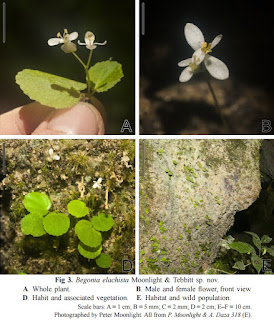 Begonia elachista Moonlight & Tebbitt sp. nov. sect. Microtuberosa Diagnosis: Begonia elachista sp. nov. is a highly distinct species with an unusual combination of features that is easily recognized as the only Peruvian species of Begonia that reaches maturity at fewer than 5 cm in height. It is also unique within Peru in having ovate leaves smaller than 3 × 3 cm and a combination of entire placentae and a tuberous habit. Etymology: The epithet ‘elachista’ comes from the Greek for ‘least’ and emphasizes the diminutive size of this species, which is the smallest known species of Begonia. Distribution and habitat: Begonia elachista sp. nov. is known only from the type locality in the Peruvian region of Pasco (Oxapampa Province) and has been collected on calcareous rocks by the entrance to a cave within primary lowland Amazonian forest, at an altitude of 430 m. It was observed growing on rocks free from other vascular plants in association with various bryophyte species in the almost continual shade of the surrounding forest. ..... Peter Watson Moonlight, Carlos Reynel and Mark Tebbitt. 2017. Begonia elachista Moonlight & Tebbitt sp. nov., An Enigmatic New Species and A New Section of Begonia (Begoniaceae) from Peru. European Journal of Taxonomy. 281: 1–13. DOI: 10.5852/ejt.2017.281 | ||||
| 4:50p | [Paleontology • 2017] Keilhauia nui • A New Ophthalmosaurid (Ichthyosauria) from Svalbard, Norway, and Evolution of the Ichthyopterygian Pelvic Girdle
Abstract In spite of a fossil record spanning over 150 million years, pelvic girdle evolution in Ichthyopterygia is poorly known. Here, we examine pelvic girdle size relationships using quantitative methods and new ophthalmosaurid material from the Slottsmøya Member Lagerstätte of Svalbard, Norway. One of these new specimens, which preserves the most complete ichthyosaur pelvic girdle from the Cretaceous, is described herein as a new taxon, Keilhauia nui gen. et sp. nov. It represents the most complete Berriasian ichthyosaur known and the youngest yet described from the Slottsmøya Member. It is diagnosed on the basis of two autapomorphies from the pelvic girdle, including an ilium that is anteroposteriorly expanded at its dorsal end and an ischiopubis that is shorter or subequal in length to the femur, as well as a unique character combination. The Slottsmøya Member Lagerstätte ichthyosaurs are significant in that they represent a diverse assemblage of ophthalmosaurids that existed immediately preceding and across the Jurassic–Cretaceous boundary. They also exhibit considerable variation in pelvic girdle morphology, and expand the known range in size variation of pelvic girdle elements in the clade. Systematic Paleontology Ichthyosauria de Blainville 1835 Neoichthyosauria Sander 2000 Thunnosauria Motani 1999 Ophthalmosauridae Baur 1887 Keilhauia gen. nov. Keilhauia nui sp. nov. Holotype and only specimen: PMO 222.655, an articulated, partial skeleton consisting of an incomplete rostrum, the dorsal and preflexural vertebrae, the right pectoral girdle and forefin, most of the pelvic girdle and both femora. Etymology: Genus name in honor of Baltazar Mathias Keilhau (1797–1858), the first Norwegian geologist to do fieldwork in the Arctic. He was part of an expedition to Svalbard (Spitsbergen) in 1827. His collection is housed at the Natural History Museum in Oslo, Norway, where PMO 222.655 is also housed. Species name in honor of Natur og Ungdom (Young Friends of the Earth Norway) working to protect the Arctic environment, who celebrate their 50 year anniversary in 2017. Holotype locality: Island of Spitsbergen, north side of Janusfjellet, approximately 13 km north of Longyearbyen, Svalbard, Norway. UTM WGS84 33X 0518847 8696044 Holotype horizon and stage: Slottsmøya Member, Agardhfjellet Formation, Janusfjellet Subgroup, early Berriasian, Early Cretaceous. 44.8 metres above the echinoderm marker bed.
Lene Liebe Delsett, Aubrey J. Roberts, Patrick S. Druckenmiller and Jørn H. Hurum. 2017. A New Ophthalmosaurid (Ichthyosauria) from Svalbard, Norway, and Evolution of the Ichthyopterygian Pelvic Girdle. PLoS ONE. 12 (1): e0169971. DOI: 10.1371/journal.pone.0169971 Nyoppdaget fiskeøgle oppkalt etter Natur og Ungdom |
| << Previous Day |
2017/02/28 [Calendar] |
Next Day >> |
